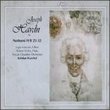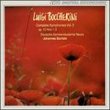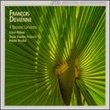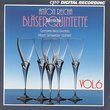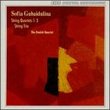| All Artists: Allan Pettersson, Thomas Sanderling, Berlin Radio Symphony Orchestra Title: Allan Pettersson: Symphony No. 8 Members Wishing: 1 Total Copies: 0 Label: Cpo Records Release Date: 10/24/1994 Genre: Classical Styles: Historical Periods, Modern, 20th, & 21st Century, Symphonies Number of Discs: 1 SwapaCD Credits: 1 UPC: 761203908523 |
Search - Allan Pettersson, Thomas Sanderling, Berlin Radio Symphony Orchestra :: Allan Pettersson: Symphony No. 8
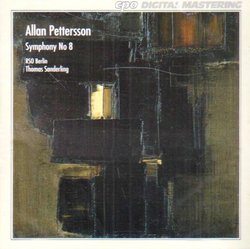 | Allan Pettersson, Thomas Sanderling, Berlin Radio Symphony Orchestra Allan Pettersson: Symphony No. 8 Genre: Classical |
Larger Image |
CD DetailsSimilar CDs |
CD ReviewsAn interpretation full of insight Torsten Elfhag | Stockholm Sweden | 09/20/2000 (5 out of 5 stars) "Thomas Sanderling belongs among the great conductors now living. He walks the footsteps of his father Kurt S. and has the potentiality of reaching very far with his interpretations. His Mahler 6 is one of the best ever recorded. Petterson is not Mahler but Sanderling makes us see to greater depths in this music. It is a wonderful and poetic interpretation which I strongly recommend." A march into battle Daniel R. Greenfield | Milwaukee, Wisconsin, United States | 05/07/2001 (4 out of 5 stars) "This symphony, along with the massive Ninth, share a common theme, which is that of constant struggle. It is like an endless march into battle over bleak and scarred terrain. The sense of frustration and world-weariness is acute. But even though it is bleak, this symphony is frequently quite lyrical, if that is any consolation. The opening ten minutes contain some of the most beautiful music that Pettersson has ever composed: a marching theme begins softly in the percussion, slowly reaches its crescendo, then a sense of brooding begins -- which is only a brief prelude to what will be a long, protracted quest. The sense of journey and battle is constantly present throughout the work. There is a slow movement forward, but it is being constantly thwarted by demons at every turn. The symphony itself is divided into two halves, each of them being about 20 minutes in length. Both halves share the same common themes described above. The second half is more militant and strife-torn at first, but begins slowly to seek some resolution as it reaches its final conclusion. The ending seems to repeatedly elude the orchestra. But it finally comes as a questioning but weary acceptance of fate. There is certainly no sense of victory; only perhaps a truce, or a cold peace. The battle will be resumed in the Ninth Symphony and later works." Brooding and somber David Thierry | Chicago, IL United States | 08/05/2008 (5 out of 5 stars) "This symphony is no more difficult to listen to than Bruckner for about the first ten minutes then gradually becomes subtly strident but in a very restrained manner. This isn't all out anguish like Mahler, never very loud and really not taxing on the ears. You have to appreciate Pettersson's dark vision. It's like a journey on a raft down a river on a rainy night."
|

